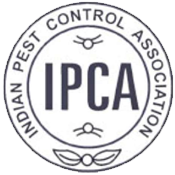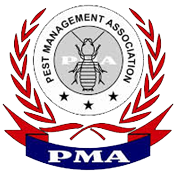
FAQ - Spider Control
Spiders typically show up in dark, out of the way places such as basements and attics. Some species of spider are particularly drawn to moisture, while others seek out dry areas in your home.
Pests can be a nuisance no matter which way you look at it. They are unhygienic to have around, spread diseases and infections and can be potentially poisonous, especially spiders. Not only are spiders dangerous, but they can be extremely annoying and hard to get rid of. Their webs are nearly invisible and frustrating to deal with, especially when they get in your hair. If you find webs in your garage, on your porch, or under your carport, use a vacuum to remove them.
Many spiders are nocturnal, spiders won’t bite unless they feel threatened, which is why night times bites are very rare. Spiders may crawl across you every now and then, but they usually don’t want to wake the sleeping giant.
Most species of spiders aren’t poisonous, and some have fangs that are too small to penetrate the skin of humans. Despite the harmlessness of most common house spiders, two species can be extremely pose a serious danger to human health: the black widow and the brown recluse, both of which can deliver bites that require immediate medical treatment.
To get rid of spider infestation can be extremely difficult to do on your own. The most common types of poisonous spiders you’ll encounter are the black widow and brown recluse. Brown recluse spiders are especially difficult to get rid of. The black widow is clearly recognizable from the large red hourglass-shaped marking visible on their abdomen. When you combine this with the fact that dealing with venomous spiders puts you at risk for a dangerous bite, if you encounter a spider in your home that you believe is poisonous, Contact pestoman and let our technicians help take care of them.
It really depends on how bad your spider problem is. Our technician will be able to advise you on how often your house will need to be treated to get the best results; generally we recommend a treatment be carried out annually.
While spiders and insects are both arthropods (animals with an exoskeleton) and have a lot in common, there are some important differences that separate them. Spiders are actually arachnids, a group that includes mites, ticks, scorpions and harvestmen, among others. The most obvious feature that distinguishes arachnids from insects is the number of legs. Arachnids have eight, while insects only have six.
All spiders are carnivorous. Most of them eat insects but a few of the larger species are big enough to prey on small vertebrate animals like mice or small birds. Most spiders’ jaws work from side to side. They have toothed edges used in breaking up the prey during feeding. Digestion starts before any of the prey (the food) is swallowed. Some spiders inject digestive enzymes into the prey before they start breaking it up; others secrete digestive fluids as they are breaking the food up with their jaws. The partially digested food is sucked into the spider’s alimentary canal.
PESTOMAN offer an effective solution to flies and mosquitoes infestation which are fast and non-toxic. Our treatment options vary depending on the severity of the flies and mosquitoes problem; we conduct a comprehensive inspection of your property at the time of treatment by one of our Technicians. For spider pest control we have trained staff to help anyone get rid of spiders, Pestoman Pest Control is here for you. We provide residential and commercial pest control services. Contact our team today to get started!




